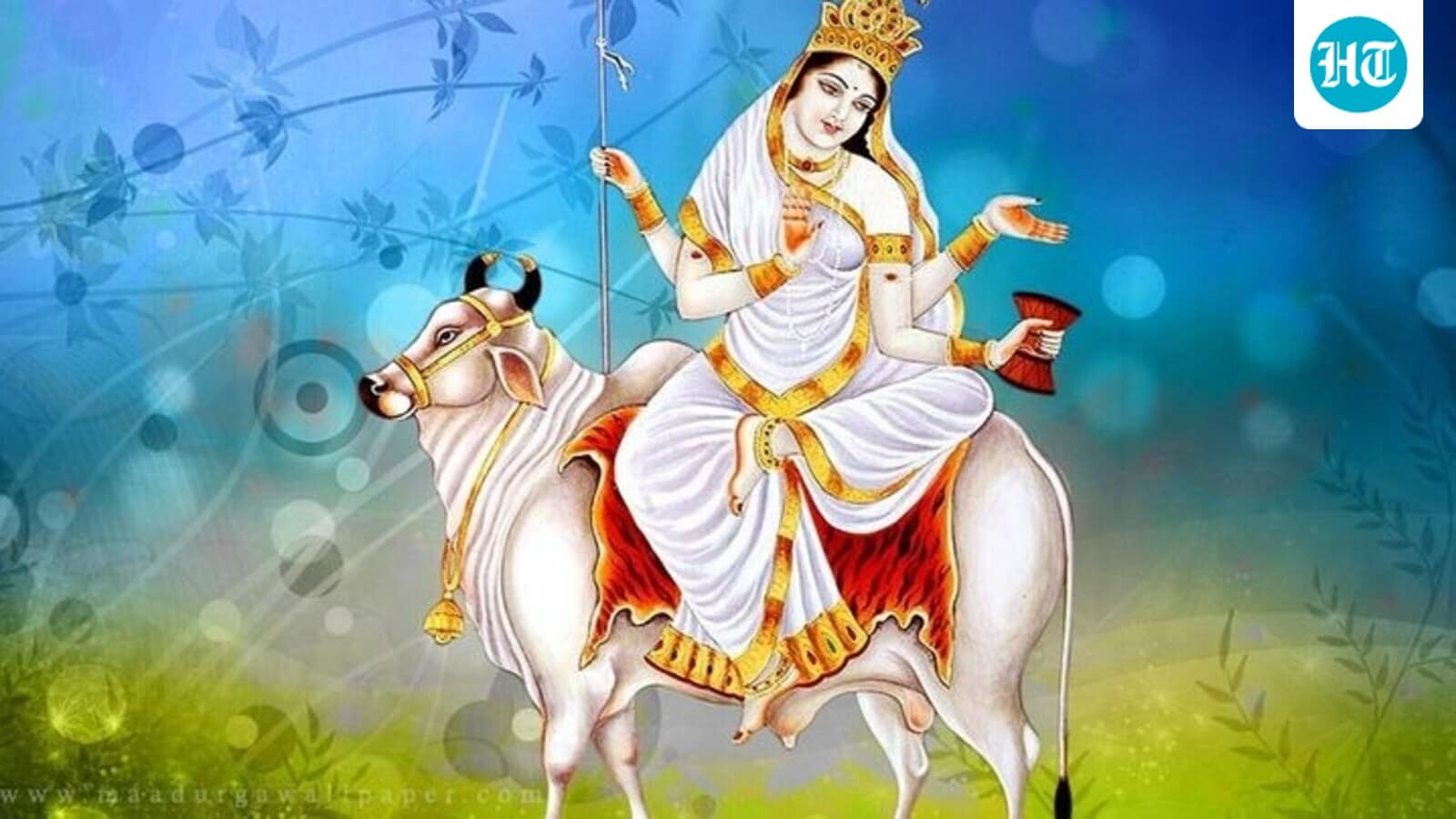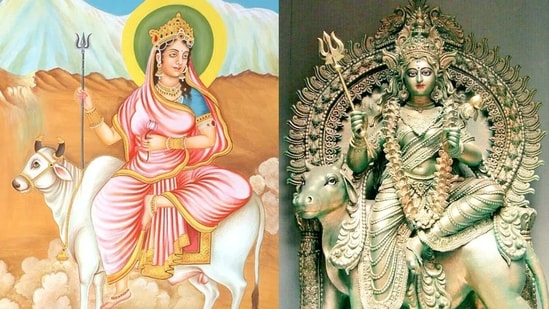
Navratri 2025 day 1: The nine-day festival of Navratri will be celebrated from September 22 to October 2 this year, concluding with Vijayadashami or Dussehra. The festivities begin with the worship of Maa Shailputri, the mountain goddess, on the first day, symbolising the start of the sacred nine nights. Here’s a look at the shubh muhurat, puja vidhi, auspicious colours, and more.
WHO MAA SHAILPUTRI? Navratri 2025 Day 1 Significance
Maa Shailputri, the first of the nine divine forms of Maa Durga, is worshipped on the first day of Navratri. Revered as the goddess of prosperity and hailed as Mother Nature herself, devotees seek her blessings for spiritual awakening. She rules over the Moon, believed to be the source of all fortunes. According to Drik Panchang, after Goddess Sati’s self-immolation, she was reborn as the daughter of Lord Himalaya and came to be known as Shailputri, “Shail” meaning mountain, and “Putri” meaning daughter.
Navratri 2025 Day 1 ghatasthapana muhurat
According to Drik Panchangthe auspicious timings for performing Ashwina Ghatasthapana, marking the start of Navratri, are as follows:
- Ashwina ghatasthhapana: Monday, 22 September 2025
- Main muhurat: 6:11 AM to 7:52 AM
- Abhijit muhurat: 11:51 AM to 12:39 PM
- Pratipada tithi: Begins 1:23 AM (22 Sept) and ends 2:55 AM (23 Sept)
- He lagna: 6:11 AM to 7:52 AM
Performing the puja during these auspicious timings is believed to invite prosperity, positive energy and divine blessings for the devotees.

Navratri 2025 day 1 colour
The colour for the first day of Navratri is white, symbolising purity, innocence, and serenity. Wearing white on Monday is believed to invite the blessings of Maa Shailputri, helping devotees feel inner peace, calm, and a sense of security.
Navratri 2025 Day 1 Puja Vidhi and Samagri
On Day 1 of Navratri, devotees begin the celebrations by worshipping Maa Shailputri, starting with the important ritual of Ghatasthapana or Kalash Sthapana. During this ceremony, a sacred pot is installed at a sanctified spot in the home, and a diya (lamp) is lit nearby for the entire nine days of the festival. It is considered one of the most significant rituals of Shardiya Navratri.
Devotees also prepare a pan with mud and navadhanya (nine grains), filling it with water. A Kalash is then placed in the water, containing Ganga Jal, coins, supari (betel nut), and akshat (raw rice mixed with turmeric). Five mango leaves are arranged around the Kalash, which is then topped with a coconut.
To complete the setup, devotees place an oil lamp, incense sticks, flowers, fruits, and sweets near the deity. A special bhog of desi ghee is also offered to Maa Shailputri as part of the puja, invoking her blessings for prosperity, peace, and spiritual growth.
Note to readers: This article is for informational purposes only.






